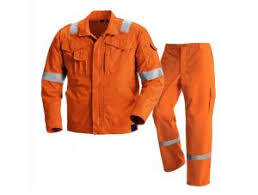workplace safety clothing product
Workplace Safety Clothing Ensuring Protection and Compliance
In today’s work environment, safety is paramount. One of the most crucial aspects of maintaining safety in various industries is the use of appropriate workplace safety clothing. Often referred to as Personal Protective Equipment (PPE), safety clothing is designed to protect employees from potential hazards they may encounter on the job. This article explores the importance of workplace safety clothing, the different types available, and how they contribute to creating a safe working environment.
The Importance of Workplace Safety Clothing
Workplace safety clothing serves several vital functions. First and foremost, it protects workers from injuries that could arise from exposure to hazardous substances, flying debris, sharp objects, electrical hazards, and extreme temperatures. According to the Occupational Safety and Health Administration (OSHA), the right protective gear can significantly reduce the risk of workplace accidents, thereby safeguarding workers' health and well-being.
Moreover, safety clothing can enhance visibility in environments where employees are at risk of being overlooked, such as construction sites and road work. High-visibility clothing, often featuring bright colors and reflective strips, helps ensure that workers are seen by others, particularly in low-light conditions.
Types of Workplace Safety Clothing
There is a wide variety of safety clothing designed for different workplace settings and hazards. Here are some crucial categories
1. High-Visibility Clothing Essential for workers in construction, road maintenance, and other visibility-challenged industries. This clothing often includes fluorescent colors and reflective strips to enhance visibility.
2. Flame-Resistant Clothing Ideal for workers in environments where they may be exposed to fire or hot materials. This type of clothing is made from materials that resist ignition and will not continue to burn once the source of ignition is removed.
3. Chemical-Resistant Clothing For those working with hazardous chemicals, special clothing made from materials resistant to specific chemical exposures is crucial. This includes coveralls, gloves, and aprons that provide adequate protection.
workplace safety clothing product

4. Cut-Resistant Clothing For workers in manufacturing or construction, protective gloves and clothing made from cut-resistant materials can prevent lacerations from sharp objects.
5. Weather-Resistant Clothing In outdoor work environments, employees must protect themselves from weather conditions. Insulated jackets, waterproof pants, and thermal gear ensure comfort and safety in extreme temperatures.
6. Respiratory Protection While not clothing in the traditional sense, respirators and masks are essential for workers who encounter airborne hazards, such as dust, fumes, and chemicals.
Compliance and Best Practices
Employers have a legal obligation to provide suitable safety clothing and enforce its use. OSHA guidelines dictate specific requirements for different industries, emphasizing the need for training employees on the importance of wearing appropriate safety gear. It's crucial that companies assess potential hazards in their workplace to determine which types of safety clothing are necessary.
In addition to providing the right gear, employers should foster a culture of safety. Regular safety meetings and training can ensure that employees understand the risks involved and the importance of compliance with safety clothing protocols. Workers should also feel encouraged to report any safety concerns related to clothing and PPE without fear of repercussions.
Conclusion
Workplace safety clothing plays an indispensable role in protecting employees from various risks associated with their jobs. By investing in high-quality, appropriate safety clothing, companies not only comply with legal requirements but also promote a culture of safety and care for their employees. When workers feel safe and valued, it leads to increased morale, productivity, and overall job satisfaction.
In summary, the right safety clothing is not just a regulatory obligation; it is a vital component of a comprehensive safety strategy designed to protect the most valuable asset of any organization—its employees. As workplace environments continue to evolve, so will the technologies and designs of safety clothing, ensuring that workers remain protected in an ever-changing industrial landscape.
-
Aero Safety Helmet - OEM Gomax Aero Adult Safety Helmet, Affordable Protection for Cyclists
NewsJun.10,2025
-
Buy uvex pheos abs alpine safety helmet – OEM & Cheap Options from China Supplier
NewsJun.10,2025
-
Volman Safety Helmet - Premium Durable Protection for Industrial Workers
NewsJun.10,2025
-
Top Safety Helmet Suppliers in UAE Reliable Brands & Affordability
NewsJun.10,2025
-
Affordable Safety Helmet with Visor & Earmuffs - OEM China Supply
NewsJun.10,2025
-
Affordable Safety Clothing in Deer Park, TX Cheap & OEM Options
NewsJun.09,2025
